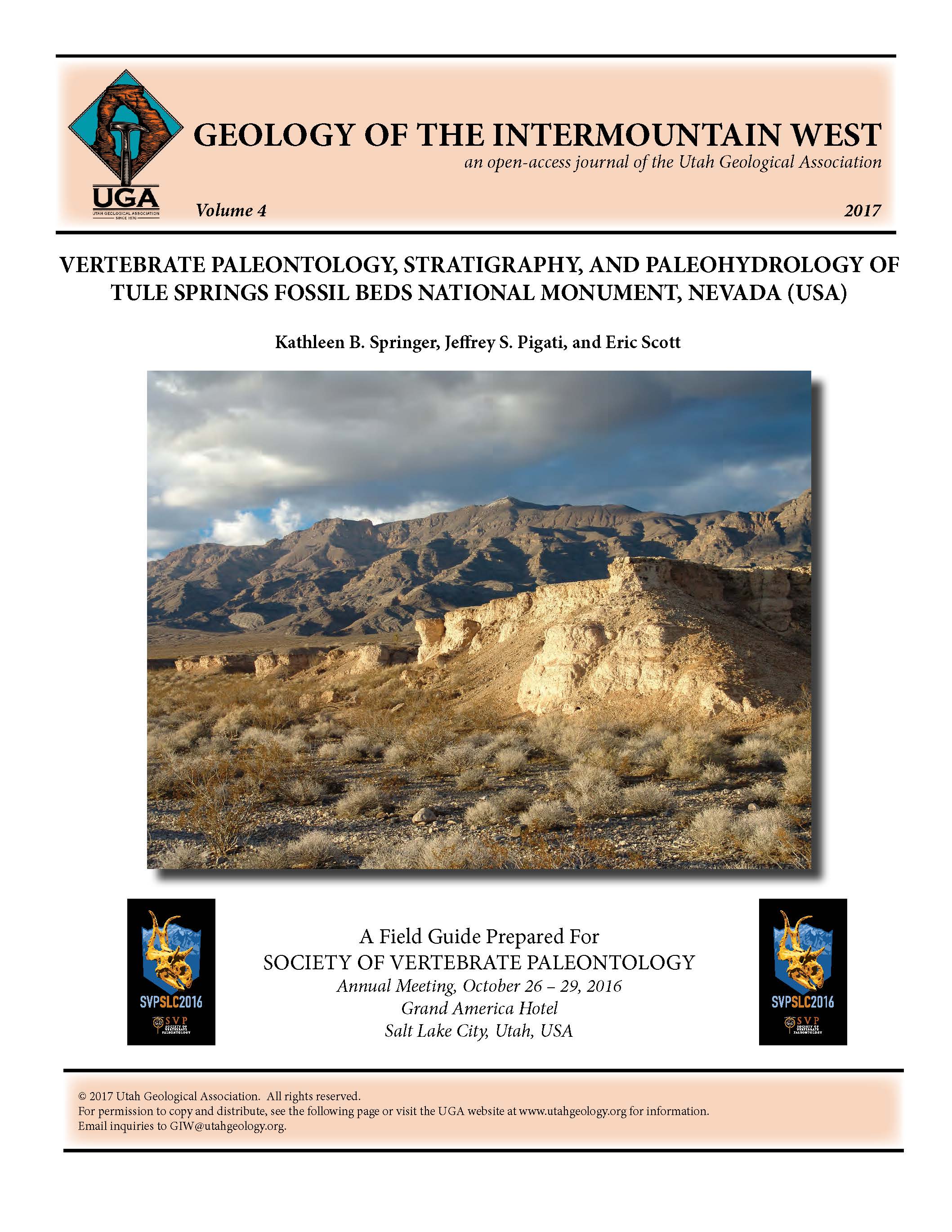Vertebrate paleontology, stratigraphy, and paleohydrology of Tule Springs Fossil Beds National Monument, Nevada (USA)
Abstract
Tule Springs Fossil Beds National Monument (TUSK) preserves 22,650 acres of the upper Las Vegas Wash in the northern Las Vegas Valley (Nevada, USA). TUSK is home to extensive and stratigraphically complex groundwater discharge (GWD) deposits, called the Las Vegas Formation, which represent springs and desert wetlands that covered much of the valley during the late Quaternary. The GWD deposits record hydrologic changes that occurred here in a dynamic and temporally congruent response to abrupt climatic oscillations over the last ~300 ka (thousands of years). The deposits also entomb the Tule Springs Local Fauna (TSLF), one of the most significant late Pleistocene (Rancholabrean) vertebrate assemblages in the American Southwest. The TSLF is both prolific and diverse, and includes a large mammal assemblage dominated by Mammuthus columbi and Camelops hesternus. Two (and possibly three) distinct species of Equus, two species of Bison, Panthera atrox, Smilodon fatalis, Canis dirus, Megalonyx jeffersonii, and Nothrotheriops shastensis are also present, and newly recognized faunal components include micromammals, amphibians, snakes, and birds. Invertebrates, plant macrofossils, and pollen also occur in the deposits and provide important and complementary paleoenvironmental information. This field compendium highlights the faunal assemblage in the classic stratigraphic sequences of the Las Vegas Formation within TUSK, emphasizes the significant hydrologic changes that occurred in the area during the recent geologic past, and examines the subsequent and repeated effect of rapid climate change on the local desert wetland ecosystem.

Copyright (c) 2017 Utah Geological Association

This work is licensed under a Creative Commons Attribution 4.0 International License.




